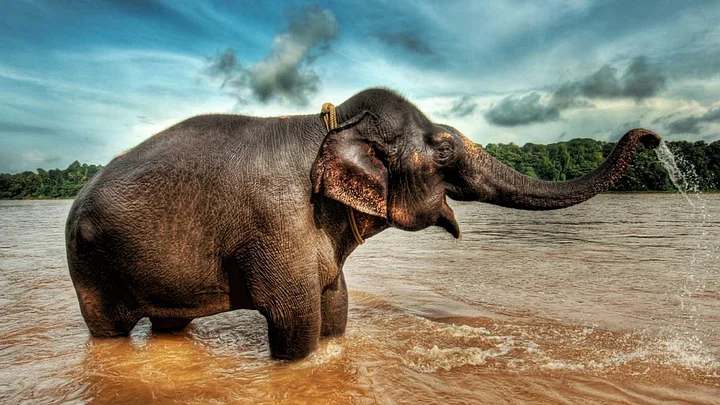On December 8, 2022, the Wildlife Protection (Amendment) Bill 2022 was passed by the upper house (Rajya Sabha) of the Parliament of India through voice vote. The Bill was introduced and passed in the lower house (Lok Sabha) in August 2022. Previously, Wildlife Protection (Amendment) Bill 2021 was introduced in Lok Sabha and referred to the Parliamentary Standing Committee on Science and Technology, Environment, Forests and Climate change in December 2021.
The Wildlife (Protection) Act 1972 has been amended several times since its enactment and has been referred as one of the most successful environmental legislations in India which gave legal protection to important wildlife habitats, native wildlife and laid the foundation for important institutions like National Tiger Conservation Authority, National and State Board of Wildlife, Wildlife Crime Control Bureau.
However, the changes brought by 2022 Bill are one of the most significant amendments in the Act till date.
One of the most important amendments is the addition of a new Chapter ‘Regulation of International Trade in Endangered Species of Wild Fauna and Flora as per Convention on International Trade in Endangered Species of Wild Fauna and Flora’ (CITES). Although India ratified the CITES in 1976, the only regulatory restriction for trade of endangered animals was through import and export licenses from the CITES Management Authority in the importing and exporting country, a certificate from the Directorate General of Foreign Trade in India and permission letter from the concerned Chief Wildlife Warden of the State where it is imported.
However, once the animal successfully entered Indian territory, it was not regulated through any domestic law- not only enabling wildlife traders in India to freely trade endangered exotic animals in India but also making it difficult to control illegal wildlife trade once it escapes regulatory barriers on international borders. With this amendment, this legal loophole appears to have been closed for the first time.
The amendment also streamlines the Schedules of protected native wildlife to three Schedule (Schedule I and II for animals; Schedule III for plants) and introduces a list of CITES regulated species in Schedule IV. There has been a significant addition of species to Schedule I. The amendment also makes it mandatory to consult the Gram Sabha in management plan for all Wildlife Sanctuaries, and further relaxes prohibitions for access to drinking and household water by local communities.

Amendment Bill of 2022 upgraded the status of striped hyenas to Schedule I. It was listed in Schedule II of the Bill of 2021 which was opposed by conservationists.
(Photo: Debadityo Sinha)
Regulating Invasive Species
For the first time, a regulatory mechanism to deal with ‘invasive alien species’ has been inserted in the Act which defines ‘any species of animal or plant which is not native to India and whose introduction or spread may threaten or adversely impact wildlife or its habitat’.
While it is a positive step towards recognising and managing invasive species, the Bill ignores the fact that for a species to be invasive it doesn’t necessarily need to be of foreign origin. Several species of plants and animals found in a particular ecosystem have the potential to become invasive in another ecosystem within the nation. For instance, Hog Deer, Barking Deer, Asian Elephant are all native to India and protected under the Act but are also designated as invasive alien species for island ecosystems in India by the National Biodiversity Authority. The new amendment fails to acknowledge such ecosystem based native species and addresses only species which are non-native.

Hog Deer in Kaziranga National Park (Assam, India).
(Photo: Debadityo Sinha)
Exceptions Related to ‘Religious and Other Purpose’ for Captive Elephants
The Bill also dilutes certain provisions which are not consonant with the objective of the Wildlife Protection Act, 1972. Particularly the exceptions for transfer and transport of captive elephants for ‘religious and any other purpose’ under Section 43(2) of the Act.
Schedule I animals like elephants can be captured only for ‘special purposes’ mentioned under Section 12 which includes education, scientific research, translocation to an alternative suitable habitat, population management of wildlife without harming any wild animal, collection of specimens for recognized zoos/museums, and for collection of snake venom for life-saving drugs.
The new proviso creates an additional exception for the transfer and transport of captive elephants for ‘religious and any other purpose’ beyond the ones prescribed in Section 12 and enlarges the scope for exploitation of captive elephants. In fact, this amendment ignores recommendations of the report of MoEFCC’s Elephant Task Force (2010) which categorically stated that majority of captive elephants were born in the wild but were utilised for entertainment in circus and tourism, alms by wandering mendicants, engaged for private/religious festivals and other purposes in religious trusts/ institutions.
Even if we accept elephants as an integral part of our cultural tradition, the government wants to balance conservation and tradition, the term ‘any other purpose’ makes it too broad and vague which can lead to legal complications.
Mr Bhupender Yadav, Hon’ble Minister for Environment during the debate in Rajya Sabha stated that ‘any other purpose’ was kept incorporating the exception for powers already present under Section 38 (of the Act). A mere reading of Section 43 clearly shows that a proviso already exists for transfer of captive animals between recognized zoos and public museums under Section 43(3). In such a situation, this new provision brought in by the amendment will create more legal uncertainty to the protection of elephants in India.

Captive elephants used for safari in a National Park in India.
(Photo: Debadityo Sinha)
Weakening of State Board of Wildlife
The Bill also introduces the constitution of a Standing Committee of the State Board of Wildlife, which experts believe will weaken the authority of the State Board of Wildlife which is presently chaired by the Chief Minister of the concerned state which brings credibility to the decisions taken. During the Rajya Sabha debate several members strongly argued against the constitution of the standing committee which will replace the State Board with the Minister of Forest & Wildlife and ten members nominated by them. Mr Jairam Ramesh, the former Minister of Environment & Forests who was also the chair of the Standing Committee argued that with no mandate to include independent experts in the standing committee, it might become a rubber stamp authority clearing developmental projects in wildlife habitats.
Much of the conversation around the Wildlife Protection (Amendment) Bill 2022 was dominated by issues related to elephants. In fact, most of the speakers in the parliamentary debate spoke of the increasing human-elephant conflict and the need to restrict animals within the forest. The real test of the Wildlife (Protection) Act, 1972, and this amendment will be measured with how well the elephants and other endangered wildlife are protected and conserved in this country. The Great Indian Bustards are facing extinction with little more than a hundred in the wild now. A country with 985 protected areas and half a century old animal preservation law might soon fail to preserve one of its species. In the last 50 years since the enactment of the Wildlife (Protection) Act, 1972, the conservation agenda of India has been centered around ‘Project Tiger’ launched in 1973 which is claimed to be one of the best conservation success stories. Going forward, the success of WPA will depend upon how well the State expands its protection beyond iconic species and recognizes the importance of diverse habitats and their connectivity in survival of wildlife.
Debadityo Sinha is an award-winning conservationist and Lead-Climate & Ecosystems team at Vidhi Centre for Legal Policy. [Email- debadityo.sinha@vidhilegalpolicy.in, Twitter- @debadityo]
(At The Quint, we question everything. Play an active role in shaping our journalism by becoming a member today.)



